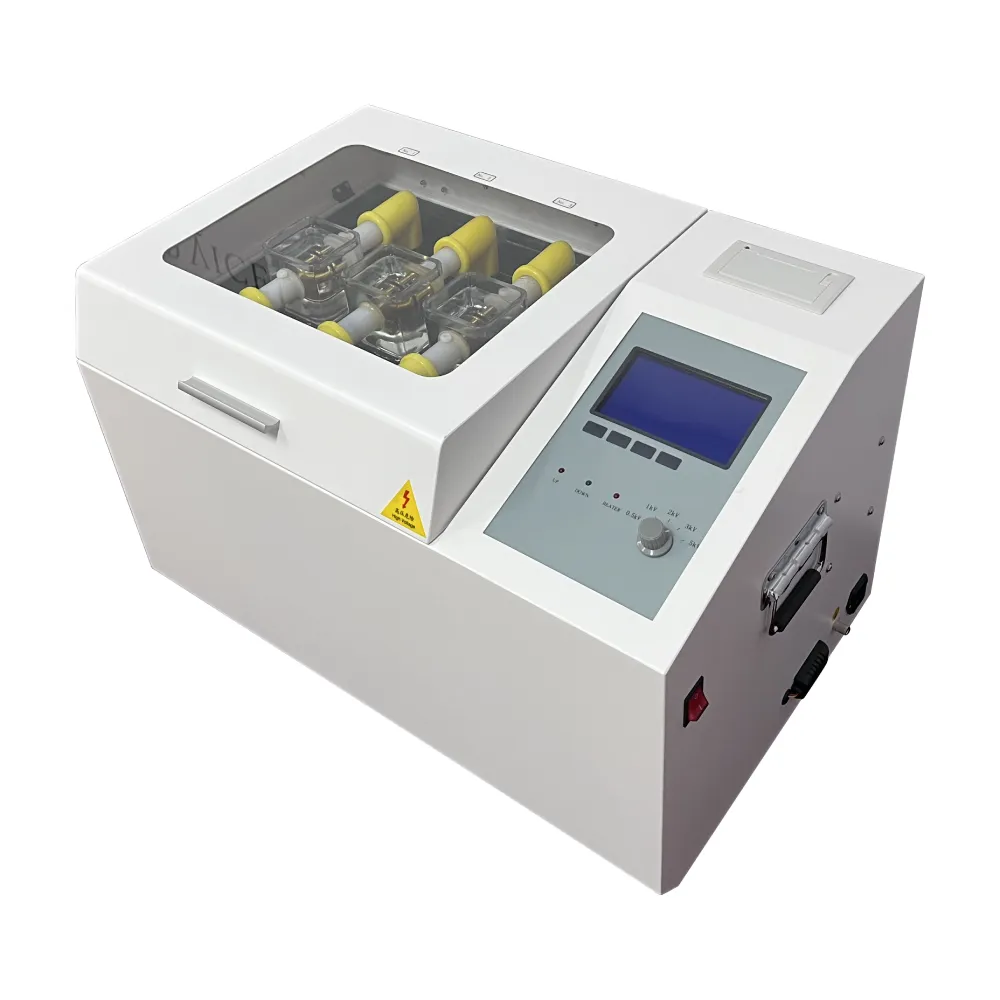TEL:
+86-0312-3189593
 English
English

Telephone:0312-3189593

Email:sales@oil-tester.com

-
 Afrikaans
Afrikaans -
 Albanian
Albanian -
 Amharic
Amharic -
 Arabic
Arabic -
 Armenian
Armenian -
 Azerbaijani
Azerbaijani -
 Basque
Basque -
 Belarusian
Belarusian -
 Bengali
Bengali -
 Bosnian
Bosnian -
 Bulgarian
Bulgarian -
 Catalan
Catalan -
 Cebuano
Cebuano -
 China
China -
 China (Taiwan)
China (Taiwan) -
 Corsican
Corsican -
 Croatian
Croatian -
 Czech
Czech -
 Danish
Danish -
 Dutch
Dutch -
 English
English -
 Esperanto
Esperanto -
 Estonian
Estonian -
 Finnish
Finnish -
 French
French -
 Frisian
Frisian -
 Galician
Galician -
 Georgian
Georgian -
 German
German -
 Greek
Greek -
 Gujarati
Gujarati -
 Haitian Creole
Haitian Creole -
 hausa
hausa -
 hawaiian
hawaiian -
 Hebrew
Hebrew -
 Hindi
Hindi -
 Miao
Miao -
 Hungarian
Hungarian -
 Icelandic
Icelandic -
 igbo
igbo -
 Indonesian
Indonesian -
 irish
irish -
 Italian
Italian -
 Japanese
Japanese -
 Javanese
Javanese -
 Kannada
Kannada -
 kazakh
kazakh -
 Khmer
Khmer -
 Rwandese
Rwandese -
 Korean
Korean -
 Kurdish
Kurdish -
 Kyrgyz
Kyrgyz -
 Lao
Lao -
 Latin
Latin -
 Latvian
Latvian -
 Lithuanian
Lithuanian -
 Luxembourgish
Luxembourgish -
 Macedonian
Macedonian -
 Malgashi
Malgashi -
 Malay
Malay -
 Malayalam
Malayalam -
 Maltese
Maltese -
 Maori
Maori -
 Marathi
Marathi -
 Mongolian
Mongolian -
 Myanmar
Myanmar -
 Nepali
Nepali -
 Norwegian
Norwegian -
 Norwegian
Norwegian -
 Occitan
Occitan -
 Pashto
Pashto -
 Persian
Persian -
 Polish
Polish -
 Portuguese
Portuguese -
 Punjabi
Punjabi -
 Romanian
Romanian -
 Russian
Russian -
 Samoan
Samoan -
 Scottish Gaelic
Scottish Gaelic -
 Serbian
Serbian -
 Sesotho
Sesotho -
 Shona
Shona -
 Sindhi
Sindhi -
 Sinhala
Sinhala -
 Slovak
Slovak -
 Slovenian
Slovenian -
 Somali
Somali -
 Spanish
Spanish -
 Sundanese
Sundanese -
 Swahili
Swahili -
 Swedish
Swedish -
 Tagalog
Tagalog -
 Tajik
Tajik -
 Tamil
Tamil -
 Tatar
Tatar -
 Telugu
Telugu -
 Thai
Thai -
 Turkish
Turkish -
 Turkmen
Turkmen -
 Ukrainian
Ukrainian -
 Urdu
Urdu -
 Uighur
Uighur -
 Uzbek
Uzbek -
 Vietnamese
Vietnamese -
 Welsh
Welsh -
 Bantu
Bantu -
 Yiddish
Yiddish -
 Yoruba
Yoruba -
 Zulu
Zulu
ஜன . 20, 2025 12:40
Back to list
gas chromatography for gas analysis
Gas chromatography is a pivotal analytical method widely used across industries such as pharmaceuticals, environmental analysis, and petrochemical processing. Its capability to separate and analyze compounds present in complex mixtures makes it indispensable for quality control, research, and development. Understanding the various types of gas chromatography is essential for selecting the appropriate method tailored to specific analytical needs, ensuring both accuracy and efficiency.
For those requiring the ability to separate stereoisomers, Chiral Gas Chromatography offers a specialized solution. This form of gas chromatography uses chiral stationary phases to separate components that are mirror images of one another. Its precision is indispensable in the pharmaceutical industry, where the efficacy and safety of enantiomers must be rigorously tested. In an era where environmental impact and sustainability drive innovation, Green Gas Chromatography has emerged as an eco-friendly alternative. By minimizing the use of organic solvents and employing energy-efficient methods, Green GC reduces carbon footprint without compromising analytical performance. This evolution reflects the growing commitment to sustainable practices in laboratory environments. When choosing a type of gas chromatography, consider the nature of the analytes, the required resolution, and the regulatory standards applicable to the industry. Each chromatography type offers its unique advantages, which must align with analytical objectives. For example, GLC’s high sensitivity for volatile compounds is critical for trace level detection in environmental monitoring, while HPGC’s rapid analysis capability suits the pharmaceutical industry’s need for timely results. In conclusion, selecting the appropriate type of gas chromatography involves a thorough understanding of each method's strengths and applications. Laboratories must not only consider the technical specifications but also account for economic and environmental factors when deciding on the best approach. By leveraging the right gas chromatography type, industries can ensure high-quality outputs, maintain regulatory compliance, and uphold sustainable practices, all of which contribute to a laboratory's reputation for excellence and reliability.


For those requiring the ability to separate stereoisomers, Chiral Gas Chromatography offers a specialized solution. This form of gas chromatography uses chiral stationary phases to separate components that are mirror images of one another. Its precision is indispensable in the pharmaceutical industry, where the efficacy and safety of enantiomers must be rigorously tested. In an era where environmental impact and sustainability drive innovation, Green Gas Chromatography has emerged as an eco-friendly alternative. By minimizing the use of organic solvents and employing energy-efficient methods, Green GC reduces carbon footprint without compromising analytical performance. This evolution reflects the growing commitment to sustainable practices in laboratory environments. When choosing a type of gas chromatography, consider the nature of the analytes, the required resolution, and the regulatory standards applicable to the industry. Each chromatography type offers its unique advantages, which must align with analytical objectives. For example, GLC’s high sensitivity for volatile compounds is critical for trace level detection in environmental monitoring, while HPGC’s rapid analysis capability suits the pharmaceutical industry’s need for timely results. In conclusion, selecting the appropriate type of gas chromatography involves a thorough understanding of each method's strengths and applications. Laboratories must not only consider the technical specifications but also account for economic and environmental factors when deciding on the best approach. By leveraging the right gas chromatography type, industries can ensure high-quality outputs, maintain regulatory compliance, and uphold sustainable practices, all of which contribute to a laboratory's reputation for excellence and reliability.
Previous:
Next:
Latest news
-
Testing Equipment Industry Sees Major Advancements in 2025: Smart & Precision Technologies Lead the WayNewsJun.06,2025
-
Applications of Direct Current Generators in Renewable Energy SystemsNewsJun.05,2025
-
Hipot Tester Calibration and Accuracy GuidelinesNewsJun.05,2025
-
Digital Circuit Breaker Analyzer Features and BenefitsNewsJun.05,2025
-
Benefits of Real-Time Power Quality Monitoring Devices for Industrial EfficiencyNewsJun.05,2025
-
Earth Fault Loop Testing in High-Rise Building Electrical SystemsNewsJun.05,2025



